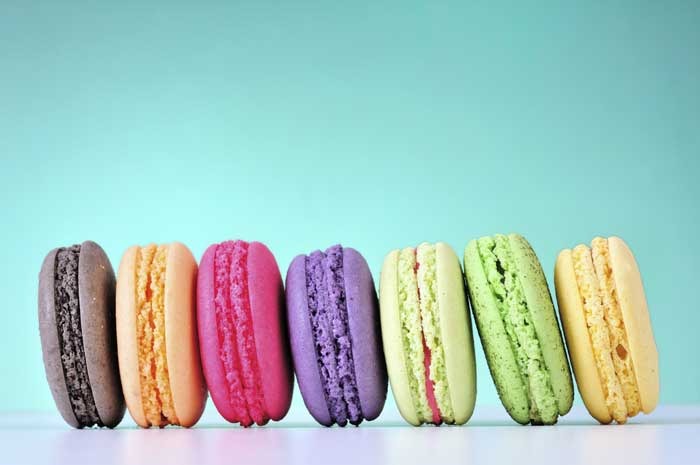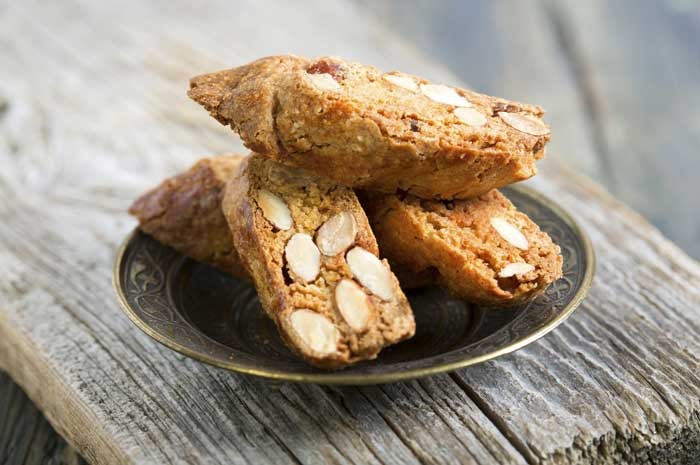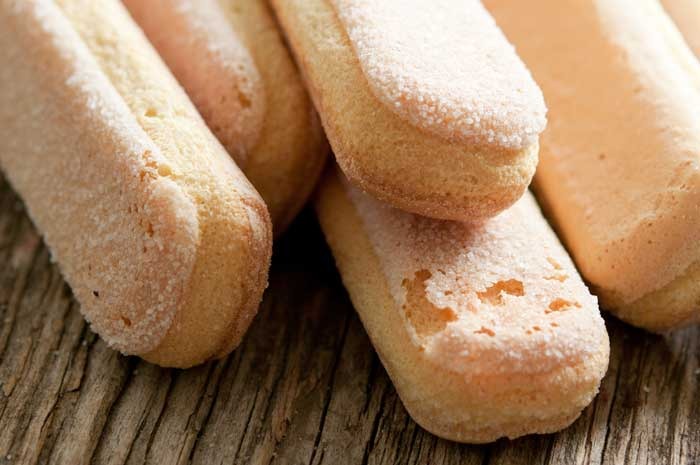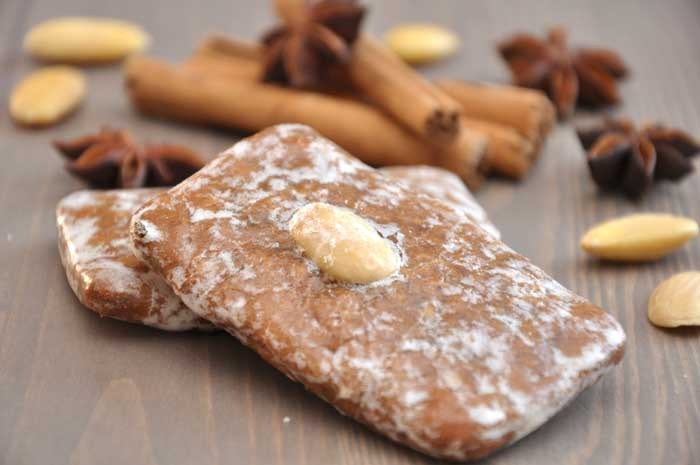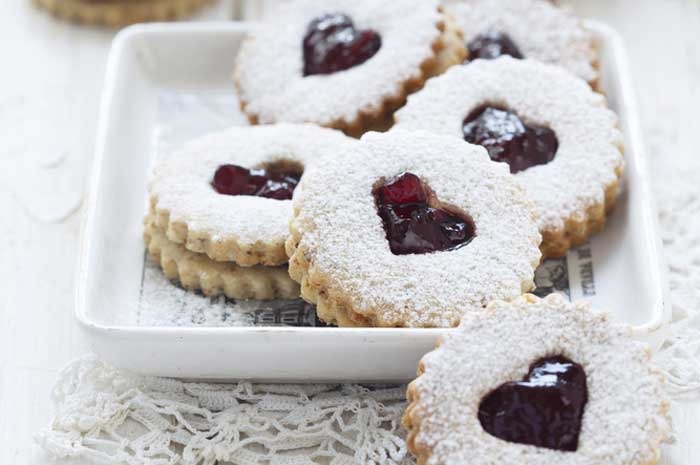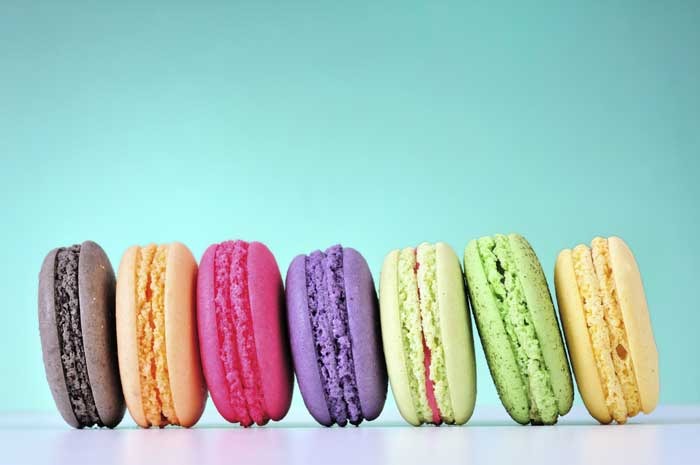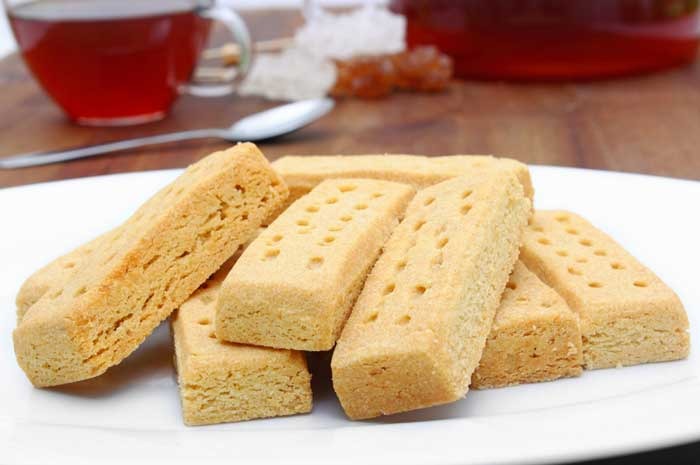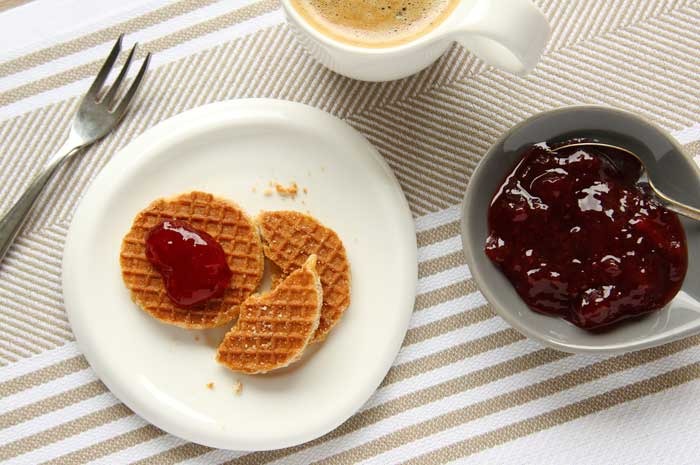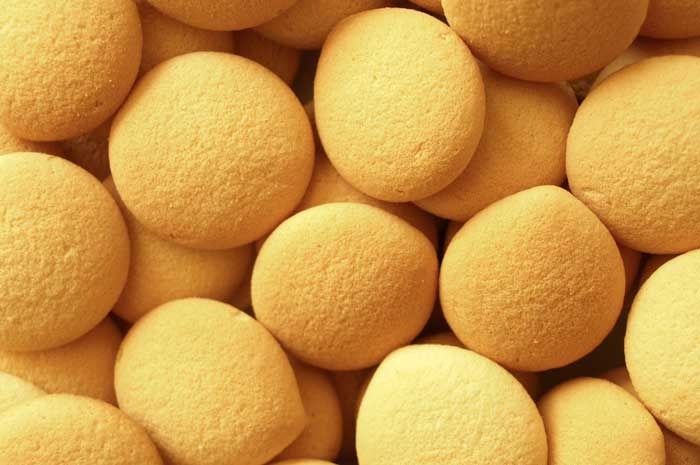Who Invented Macarons And 10 Other Iconic Cookie Origins
We may receive a commission on purchases made from links.
The first cookies weren't always intended to be cookies, but it was love at first crumble.
Barátfüle
A triangular dumpling filled with jam and coated with fried bread crumbs, barátfüle, a traditional cookie enjoyed in Hungary, was invented by a German chef named Freund, who called the cookie "Freund's filled pockets," according to Krisztina Maksai, author of European Cookies. Barátfüle translates to "friend's ear," and is made by cutting the dough into small triangles, then stuffing and boiling it.
Biscotti
Biscotti, also called cantuccini by Italians, who typically eat it with wine or coffee, traces its origins to Roman times, when it was eaten as nourishment during long journeys and was a diet staple in the Roman army. The twice-baked crunchy cookie can be flavored with nuts, seeds, and fruit and is traditionally dunked in sweet wine.
Chocolate Chip Cookie
Originally called a "chocolate chunk cookie," the chocolate chip cookie — a chewy, gooey, and often crunchy cookie made with chocolate chips — was invented in 1937 by Ruth Graves Wakefield, who ran the Toll House Restaurant in Whitman, Mass. Wakefield made an agreement with Nestlé to print the Toll House Cookie recipe on the wrapper of the Semi-Sweet Chocolate Bar. In 1997, the chocolate chip cookie was designated the official cookie of the commonwealth.
Ladyfingers
Beige, oblong cookies shaped like fingers (if you squint), these French biscuits were first made in the late fifteenth century at the court of the Duchy of Savoy, where they were baked as a treat to welcome the King of France.
Lebkuchen/Pfefferkuchen
Called by either of the German words lebkuchen, meaning "gingerbread," or pfefferkuchen, meaning "pepper cookie," this cookie is softer than the traditional gingerbread cookie. Similar recipes date back to ancient Egypt, but the best-known variation of the cookie is the nürnberger lebkuchen, first made in Nürnberg, Germany, where it was made into creative shapes and designs and decorated by a professional guild of gingerbread makers, the Lebkuchner Guild. Nürnberger lebkuchen can be rectangular or round and have a sweet, slightly nutty taste. It's generally made with spices of aniseed, coriander, cloves, ginger, cardamom, and allspice, giving it a spicy aroma, and with nuts, including almonds, hazelnuts, and walnuts, to give it a little crunch.
Linzer Cookies
Linzer cookies are derived from what is believed to be the oldest known cake in the world, the Linzer torte, a fruity pastry with a lattice design. The cake may have been invented by a Viennese confectioner named Linzer or the Franconian pastry chef Johann Konrad Vogel, who popularized it in the nineteenth century. Linzer cookies are filled with jam and spiced with cinnamon.
Macaron
The macaron that we know today is a little different from the original Italian macaron, which was an almond meringue cookie, crisp on the outside and soft on the inside. The Italian macaron came to France in 1533, when the pastry chefs of Catherine de Medici their keep during the French Revolution by baking and selling macarons. French macarons, light and crisp cookies that melt in your mouth, were invented in the twentieth century by Pierre Desfontaines Ladurée, who thought to join two meringue macarons and fill them with ganache. Today, macarons come in all kinds of colors and flavors, such as raspberry, pistachio, chestnut, basil lime, and rose and white chocolate — the flavor options are limitless.
Shortbread
It's thought that Mary, Queen of Scots, who reigned in the sixteenth century, is responsible for the popularization of shortbread. The queen loved to snack on Petticoat Tails, which were made from thin and crispy shortbread flavored with caraway seeds. Shortbread, once called "biscuit bread," was traditionally made with leftover dough used to make bread and dried out in an oven until it became hard and crunchy.
Stroopwafel
Stroopwafel, translated as "syrup waffle," was invented in the town of Gouda in the Netherlands in the nineteenth century by a baker who many believe was named Gerard Kamphuisen, using crumbs from his bakery that were sweetened with syrup. Today, a stroopwafel is made by combining two round waffle halves, filled with syrup or caramel, and dipping one side in chocolate and is traditionally eaten with a cup of coffee, tea, or cocoa. Before it's eaten, the cookie is set on top of the hot cup, so that the heat softens it and the filling melts, creating the aroma of cinnamon and nutmeg.
Sugar Cookie
The simple sugar cookie, which today is cut into all kinds of shapes and decorated with frosting and sprinkles, is probably derived from a popular unleavened cookie from seventeenth-century Europe called a "jumble." But it can be traced more recently to the eighteenth century in Nazareth, Pennsylvania, when German Protestant settlers invented the Nazareth Sugar Cookie, a round and buttery cookie.
Tareco
Eaten as an appetizer or as an evening snack in Brazil, a tareco, a hard, golden-brown cookie, was invented in the Brazilian state of Pernambuco and was a diet staple in Spanish and British naval fleets during the Age of Exploration. The cookie was widely popularized by the Brazilian song "Tareco e Mariola" by Flávio José.
